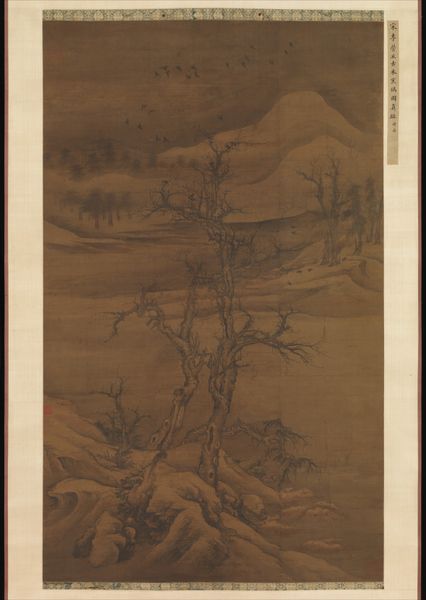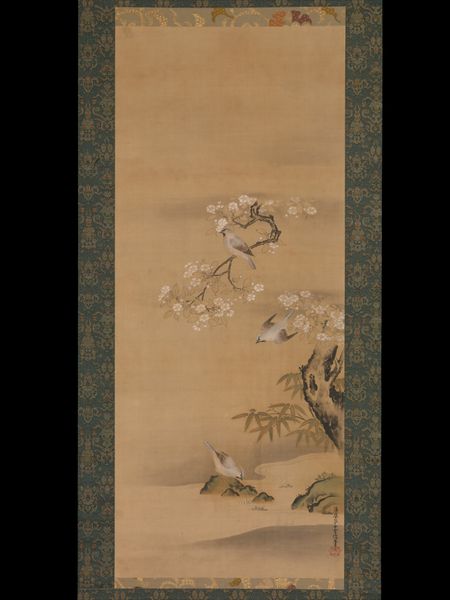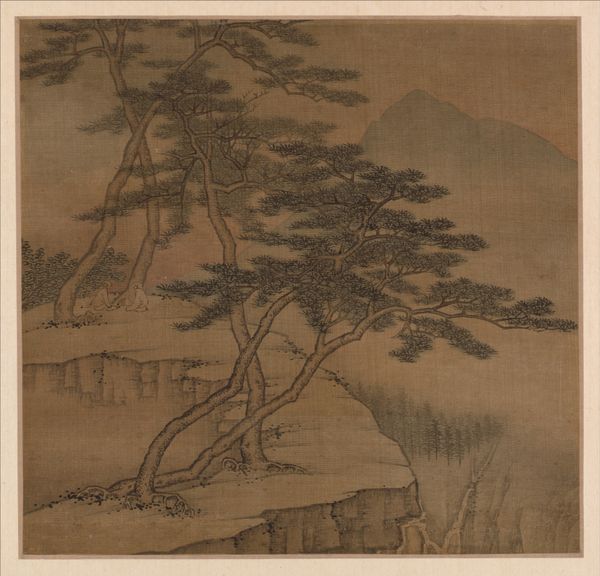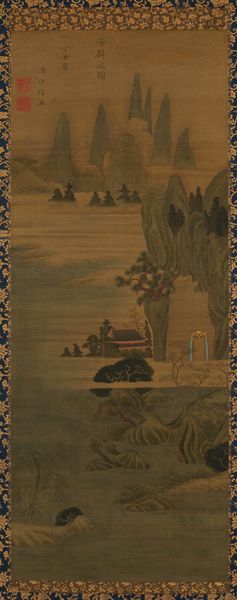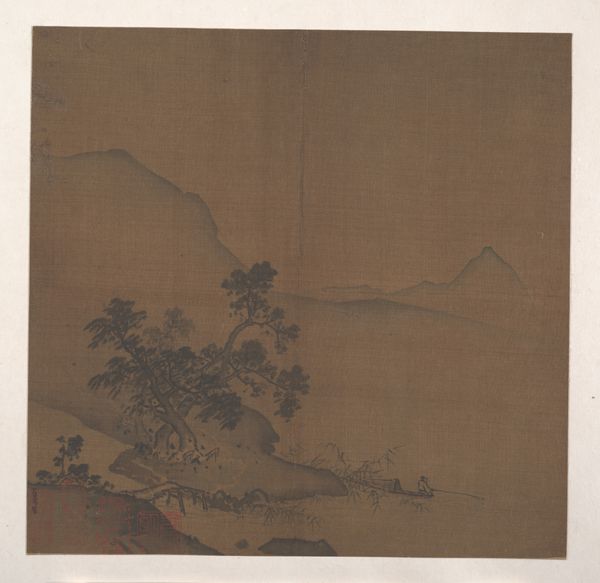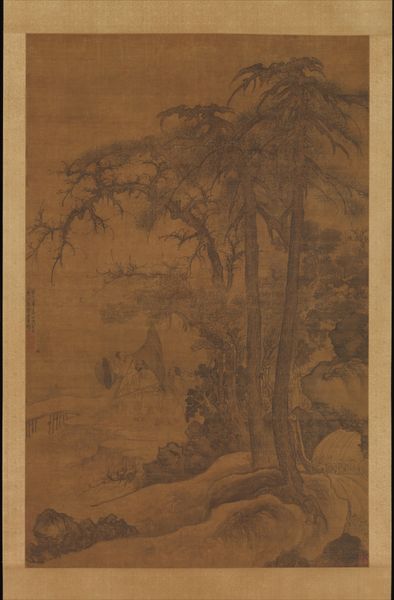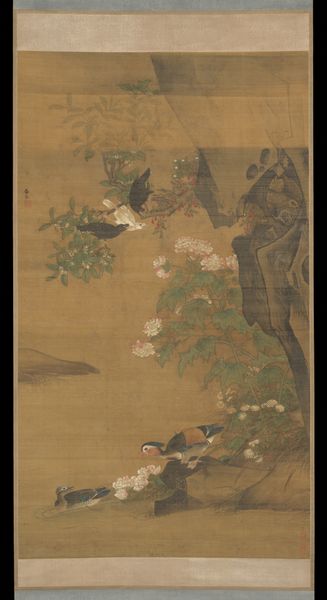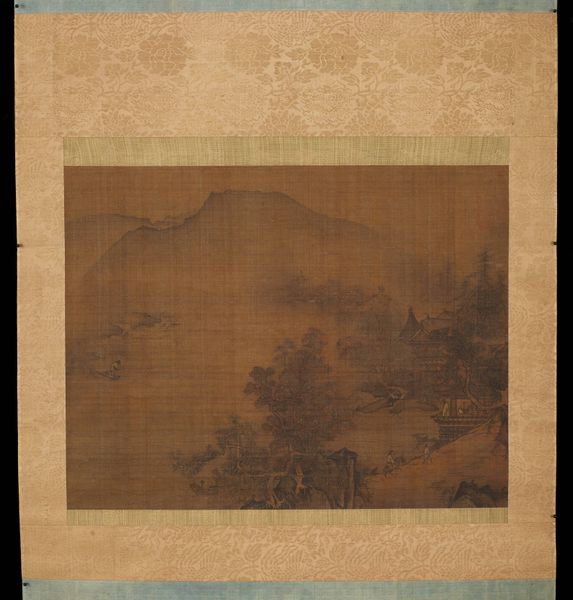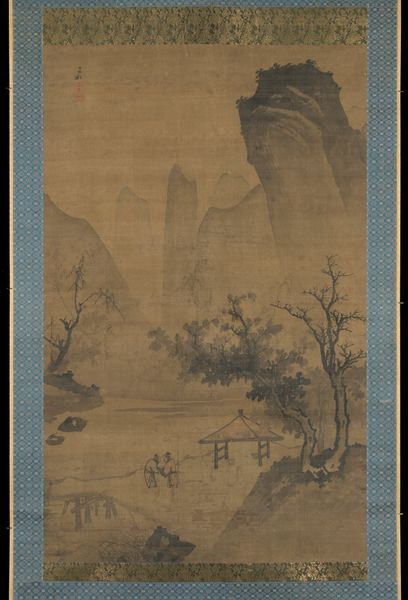
Spring View from a Thatched Pavilion on the Lakeshore c. late 15th century
0:00
0:00
drawing, tempera, painting, paper, ink
#
drawing
#
ink painting
#
tempera
#
painting
#
asian-art
#
landscape
#
paper
#
text
#
ink
Dimensions: 42.0 × 35.3 cm (painting); 128.0 × 53.3 cm (overall)
Copyright: Public Domain
Curator: Here we have an ink and tempera painting on paper, titled "Spring View from a Thatched Pavilion on the Lakeshore," dating back to the late 15th century. The artist remains anonymous. Editor: The painting strikes me as initially quiet, almost muted, but then details emerge from the subtly graded ink washes. There’s a compelling contrast between the meticulously rendered foliage in the foreground and the misty, barely-there mountains in the background. Curator: It’s important to remember that during the Ming Dynasty, landscapes weren’t just pretty scenes; they were laden with social and philosophical meaning. Thinkers in China regarded the observation of the external world to connect with a greater cosmos, which in turn enabled moral introspection. That could explain why landscapes have such an important place in Chinese paintings and visual arts. Editor: Yes, but I would add that the very *form* dictates so much of that meaning! Observe the artist’s masterful manipulation of space through the recession of planes – the progression from solid foreground elements to ethereal background forms—and one really sees, feels, an experience about hierarchy in the landscape and in social settings of that time. Curator: Hierarchy and harmony. These images celebrated and reinforced existing socio-political orders. One figure might occupy a slightly larger area than another, but it still serves a larger purpose that ultimately relates back to the whole. Editor: And the expressive brushwork of the pine tree, contrasted against the geometric precision of the pavilion… the visual tensions capture the energy of a particular perspective and invites introspection through observation, I feel. Curator: This piece, though unsigned, participates in a rich tradition. By studying it, we see what the elites valued—nature, contemplation, and, indeed, their place in the hierarchy. But it's also a starting point. Editor: It invites a concentrated seeing, yes. Even now. A powerful reminder of how formalism can intersect, illuminating social and cultural frameworks of the past and the present.
Comments
No comments
Be the first to comment and join the conversation on the ultimate creative platform.


